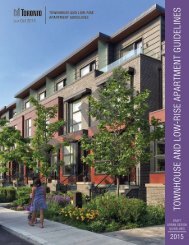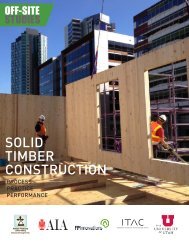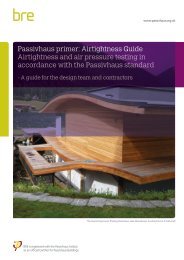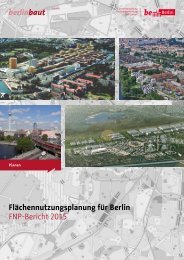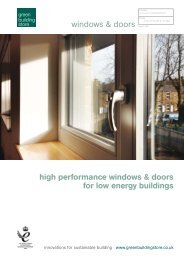TRUE URBAN SPIRIT
b008379b
b008379b
You also want an ePaper? Increase the reach of your titles
YUMPU automatically turns print PDFs into web optimized ePapers that Google loves.
3 VIENNA: REACHING BEYOND ITS BORDERS<br />
3.2<br />
THE<br />
METROPOLITAN<br />
REGION<br />
Vienna has never before been as closely networked<br />
with its environs. Administrative boundaries<br />
play a dwindling role in the everyday lives<br />
of people and enterprises. The population makes<br />
use of the entire region to work and live in, for<br />
leisure activities and shopping. This networking<br />
within the region is further intensified as a<br />
result of demographic growth, e. g. by triggering<br />
stronger migration trends within the metropolitan<br />
region. At the same time, housing and industrial<br />
zones are extending across provincial and municipal<br />
boundaries. Landscapes, natural and green<br />
space networks, such as Lobau, Vienna Woods<br />
or Marchfeld, have never stopped at administrative<br />
borders. The metropolitan region is a reality<br />
– physically, morphologically and functionally.<br />
The centres in the centrope region, too, will<br />
cohere much more strongly in the future and<br />
result in a functional, polycentric network. Thus<br />
the time required to travel from Vienna to St.<br />
Pölten has been cut to 25 minutes since the<br />
trains along the Western Railway Line are travelling<br />
at a speed of up to 230 km/h. Living in the<br />
capital of Lower Austria and working in Vienna or<br />
vice versa or mutual visits to leisure, cultural or<br />
shopping facilities have duly become much easier<br />
and more attractive. The capacity use of trains<br />
and increasing commuter flows also indicate that<br />
Vienna is “growing closer” to the Slovak capital<br />
Bratislava.<br />
One outcome of this development is that the<br />
region is becoming more diversified, but also<br />
stronger. Many municipalities have evolved into<br />
competitive locations, in the process boosting and<br />
complementing the metropolitan function of the<br />
Vienna Region. Wiener Neustadt and Tulln today<br />
dispose of widely recognised tertiary-education<br />
facilities and research institutes that serve as<br />
magnets for attracting technology-oriented enterprises.<br />
In the larger metropolitan region, the<br />
same is true of Krems and St. Pölten. Hardly any<br />
goods or services today are available in the core<br />
city only.<br />
For Vienna and the metropolitan region, this<br />
development opens up economic possibilities and<br />
investment options for Austrian and international<br />
enterprises, creates attractive, easily accessible<br />
workplaces and hence greater prosperity. Urban,<br />
municipal and regional development can all<br />
achieve more if they are given a wider leeway for<br />
action – for example with regard to the provision<br />
of infrastructure and public services.<br />
88



